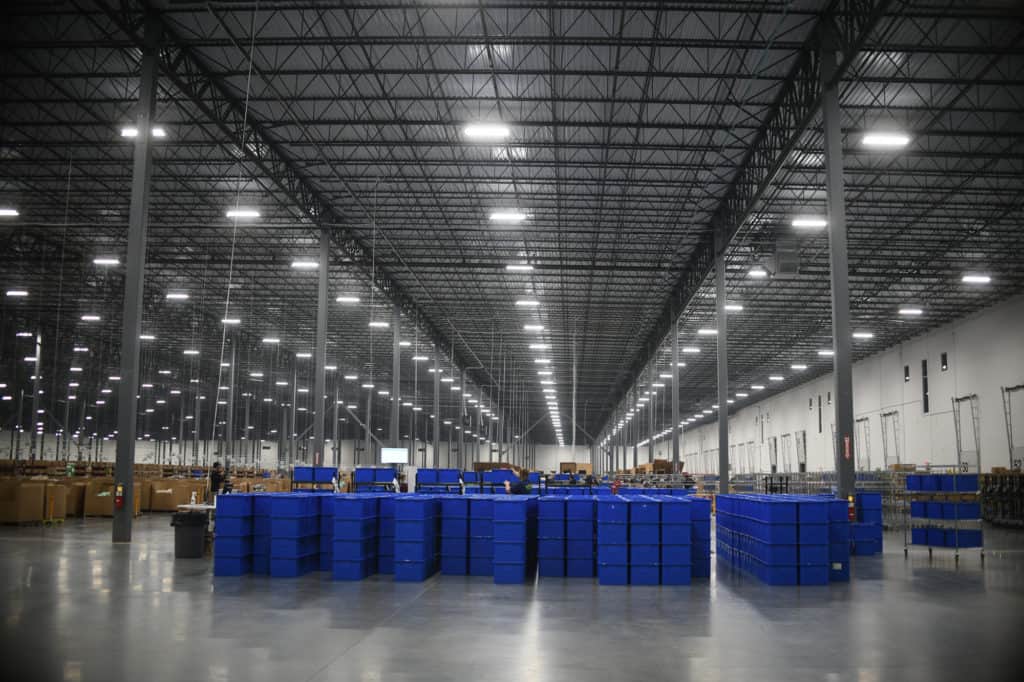With the ever-increasing pressure for rapid order fulfillment expanding, there is a constant need to streamline, improve and reassess existing warehouse operations practices. There have been many recent advancements in picking technology, but one of the often-overlooked areas of improvement is replenishment in a warehouse.

Today, we’ll explore six best practices that can help to streamline inventory management within the warehouse:
- Select the right replenishment method for your needs
- Have a plan for emergency replenishment needs
- Consider replenishing directly after receiving for fast-moving inventory
- Configure your WMS with triggers to automate re-ordering
- Enhance order picking accuracy with automation
- Use collaborative robots to interleave picking and re-stocking with the same workflow
Here’s how you can put these best practices to work to improve warehouse replenishment.
Select the right replenishment method for your needs
In any warehouse, it is important to align inventory replenishment with your picking methods and workflows. There are a number of warehouse replenishment methods to choose from:
- Day (or wave) demand replenishment: With day or wave demand replenishment, only the stock needed for the day or wave is moved to forward pick locations. This can be a useful option for warehouses with small pick faces or slow-moving SKUs.
- Top-off (or lean time) replenishment: With top-off replenishment or lean time replenishment, each fixed location is filled to capacity during down time. This works well for warehouses with short picking windows, often the case for those with high-demand, fast-moving SKUs.
- Opportunistic replenishment: With opportunistic replenishment, the amount of inventory needed for two to four weeks (based on demand forecast) is moved to picking locations. The goal of opportunistic replenishment is to increase productivity by minimizing the number of trips to the reserve. But because it requires moving a larger volume of inventory to picking locations, it’s not ideal for warehouses with small pick faces. Opportunistic replenishment relies on accurate forecasting.
Some warehouses rely on a combination of replenishment methods, either for different product lines or during peak demand periods.
Configure your WMS with triggers to automate re-ordering
The proper configuration of a Warehouse Management System (WMS) helps to maintain a constant and steady flow of inventory. One WMS feature many warehouses take advantage of involves automated triggers, which allow you to set thresholds for re-ordering by individual item. Because re-ordering is automatically triggered, there’s less chance of backorders or out-of-stock items, even when sales volume is unexpectedly high.
Have a plan for emergency replenishment needs
It is important to have a defined process for handling issues with inventory availability during picking. For example, if an item is not present at the defined location, the picker should move the in-process carton to a resolution area and continue on to the next job. With the information provided for the missing item(s), a designated resolution specialist can verify the status of the pick location, run a cycle count and arrange for immediate replenishment. Running warehouse replenishment process in parallel to picking tasks allows for resolution without causing significant delays to overall order fulfillment activity.
Consider replenishing directly after receiving for fast-moving inventory
If there is inventory with known backorders present and a clear demand for upcoming picks, it may be most effective to replenish that inventory directly from the receiving dock to forward pick locations. This can help to reduce any unnecessary storage given that the demand is verified, and it also eliminates the need to replenish the inventory again later.
When replenishing directly from receiving, selecting the appropriate forward pick location based on forecasted volume is key. Otherwise, you’ll end up with overflow.
Enhance picking accuracy with automation
Picking and replenishment are closely linked and any issues during the picking process can have negative impacts on the ability to replenish effectively. Using automation wherever possible can reduce order errors and help to eliminate future replenishment headaches. Automation technologies such as sensors and robotics can enhance picking accuracy and direct replenishment activities based on reliable signals, not guesswork.
Use collaborative robots to interleave picking and re-stocking within the same workflow
One innovation in picking automation, collaborative mobile robots, can solve many replenishment challenges by interleaving picking and re-stocking activities in the same workflow. These systems leverage AI to guide warehouse associates during picking and other tasks, keeping associates on-task while automatically selecting the most efficient picking routes and guiding associates through the picking process to reduce errors. By combining picking and replenishment within the same workflow, the pickers’ time is used as efficiently as possible.
Replenishment remains an important factor in differentiating warehouse operations as it sets the pace for world-class efficiency and customer experience. Warehouse operators who make smart use of tools and technologies to reduce errors and optimize processes are best-equipped to meet — and exceed — customer expectations.


